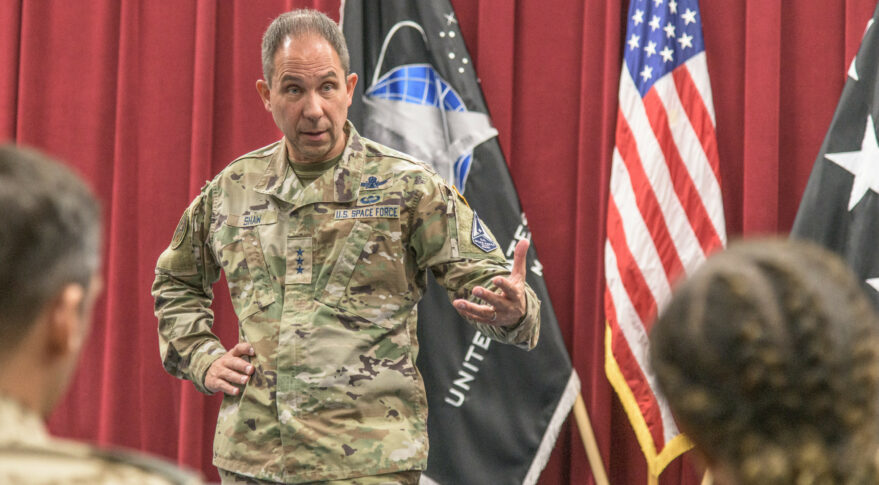
WASHINGTON — Lt. Gen. John Shaw, deputy commander of U.S. Space Command, was at Cape Canaveral, Florida, earlier this week, hoping to see NASA’s first Artemis launch. The launch was scrubbed but Shaw said he took advantage of the time there to chat with NASA leaders about future collaborations.
“We had a lot of discussions,” he said Aug. 31 in remarks to the Defense Advanced Research Projects Agency “DARPA Forward” conference held in Fort Collins, Colorado.
Shaw said space security problems confronting the United States and allies can’t be solved by the military alone, particularly as DoD looks to support operations beyond Earth orbit. “As NASA and Artemis go to the moon, one of the challenges that we will have as a nation is understanding that lunar environment,” he said.
DoD today performs space traffic control to help satellites in orbit and the International Space Station avoid collisions with other satellites or with debris objects. “We think that we’re probably going to need to partner with NASA in the future as we send astronauts into the lunar environment for long durations to do the same thing there,” Shaw said. In cislunar space, “it’s not quite as crowded, but it’s not empty of debris and objects.”
Tracking that vast region of space will be difficult due to the “tyranny of volume,” said Shaw. The area between the Earth and the moon is “a lot of volume, and that’s a lot of opportunity for us to miss things that are happening that we need to be aware of,” he said. That includes natural hazards, debris and electromagnetic interference but also “deliberate threats.”
Shaw said new technologies will be needed to better understand the cislunar space environment, including space-based sensors and vehicles that can operate autonomously for long periods of time without resupply or commands from the ground.
He noted that DARPA has led the way in technological innovations with autonomous vehicles, mostly for operations on land, at sea or in the air. “I would propose that in no domain will it be more important to have cutting-edge autonomy enabled by machine learning than in the space domain,” said Shaw.
Because of the distances, he said, “we’re going to need platforms that don’t need human operators or even machines necessarily back on Earth to tell them what’s going on and how to behave,” he added. “They’re going to need to do that autonomously, whether that’s maintaining orbits, avoiding debris, avoiding threats, or finding the optimal ways to conduct their mission.”
As technology evolves, he said, “we have to find the right balance between human oversight and what we allow machines to do on their own … as we’re operating more complex systems farther and farther away from the planet.”
Addressing the DARPA crowd, Shaw said, “I urge you all, when you’re thinking autonomous platforms, think not only the terrestrial domains, but think about space, how do we take that cutting-edge innovation and capability and apply it to missions that we’re going to need to be able to do in the space domain?”
Propulsion, in-space refueling
Other technologies that will be critical for deep space are propulsion and logistics support, Shaw said. He gave kudos to DARPA for its nuclear powered spacecraft project known as DRACO, or Demonstration Rocket for Agile Cislunar Operations.
Range and endurance are limited by current electric and chemical space propulsion systems, which Shaw called “the tyranny of the rocket equation.”
Right now, “I don’t see anything on the technological horizon that’s going to be a big game changer on that,” said Shaw, adding that programs like DRACO will bring incremental improvements in propulsion for long-dwell missions or missions that require quick maneuvers on short timelines.
Logistics support is another major hurdle, he said. “Since the dawn of the space age … all of our satellites and spacecraft we send to space have taken their propellant with them and they don’t refuel.”
As the nation invests in new space platforms, said Shaw, “we need to develop with that a complementary logistics structure that allows us to refuel, to service and extend lifetime and extend capability.”
Military organizations that are planning satellite missions “have to use the constraints on their propellant in their calculations. They have to consider the delta-v budget over the lifetime of a satellite when they think about their mission,” he said. “I would love to take that out of the equation.”